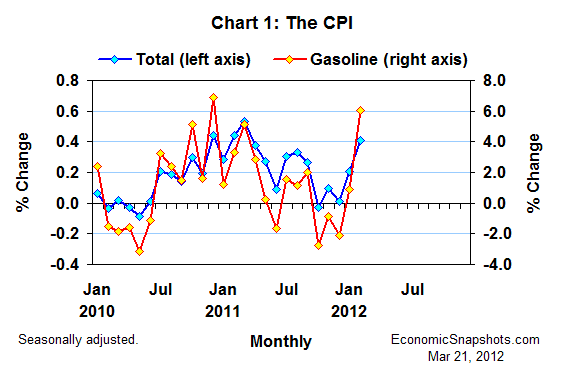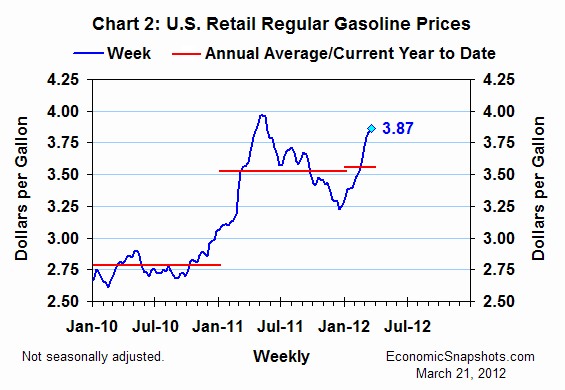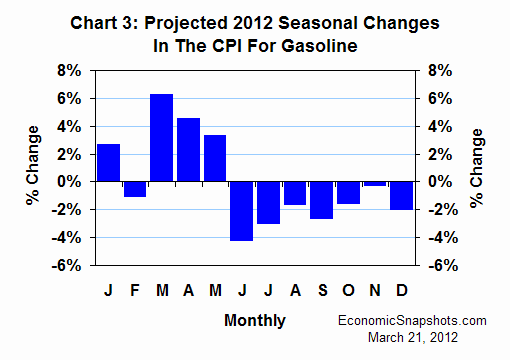
| Back to Index |
March 21, 2012 – In last week’s data, the U.S. Consumer Price Index (CPI) rose by an above-trend 0.4% in February. A 6% leap in consumer gasoline prices accounted for nearly all (0.3 percentage points) of this total CPI growth (Chart 1).

The weekly data show continuing strong growth in U.S. gasoline prices in the early part of March. But, in contrast to February’s experience, these new increases appear to be roughly in line with the regular seasonal price changes that we typically see at this time of the year.
In Monday’s data from the Energy Information Administration (EIA), the average U.S. retail price for regular gasoline rose by 4 cents, to $3.87 per gallon in the week ending March 19 (Chart 2).

That yielded an average price of $3.83 for the month of March to date – an increase of 7% (+25 cents) compared to the full-month February average. In February, these EIA gasoline prices rose by 5.9% (+20 cents).
Before drawing any firm conclusions from the EIA data, it is important to note that they are not seasonally-adjusted.
Based on the monthly seasonal-adjustment factors developed by the Bureau of Labor Statistics (BLS) for the gasoline component of the CPI, we should expect to see large seasonal increases in gasoline prices in each of the next three months, from March through May (Chart 3).

By definition, these seasonal price changes occur every year, at the same time of the year. They are strictly temporary and will be offset by changes in the opposite direction before the year is over.
The headline CPI data are seasonally adjusted to remove these recurring price changes. For March, a 7% unadjusted rise in the CPI for gasoline would yield a seasonally-adjusted increase of only 0.7%. That’s too small to have any visible impact on total CPI growth.
Looking beyond these seasonal effects, it remains unclear whether this year’s gasoline prices will exceed last year’s average level. But, these prices rose very sharply last year (refer back to Chart 2) and those high price levels have been sustained so far this year.
Suzanne Rizzo